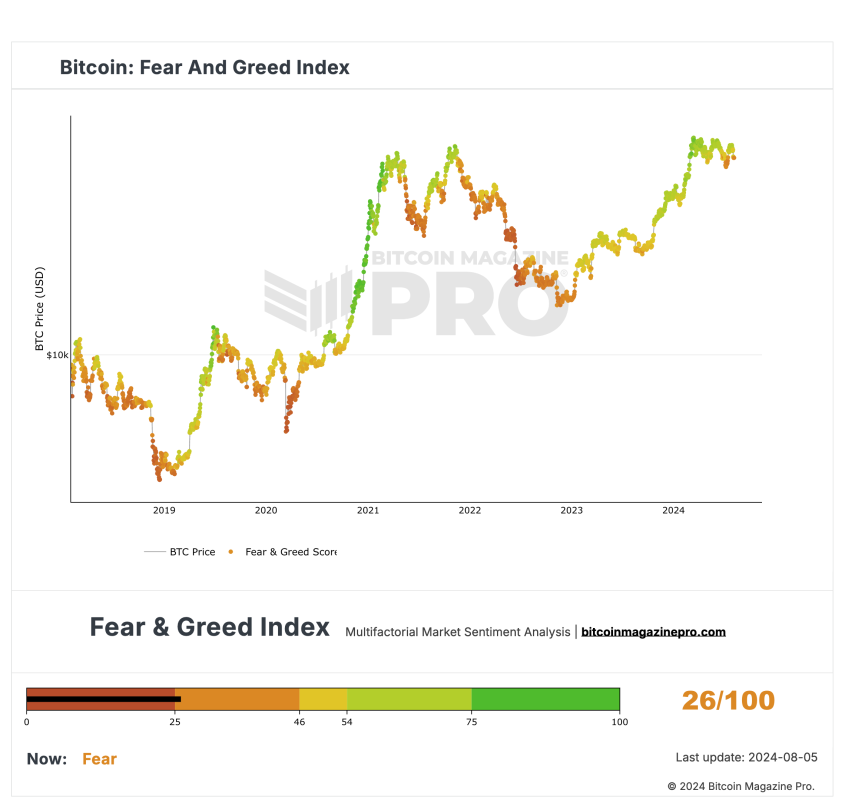Bitcoin’s price plunged below $50,000 on Monday, hitting a six-month low amid a global market selloff.
Destruction: #bitcoin Fall below 50 thousand dollars pic.twitter.com/11og9GoSyi
— Bitcoin Magazine (@BitcoinMagazine) August 5, 2024
Bitcoin fell 20% to around $49,000 before rebounding slightly to trade above $50,000 again. The sharp decline coincided with a global stock market crash on recession fears.
Japan’s Nikkei plunged more than 8%, its worst two-day drop since 1987. Asian and European markets are experiencing their worst losses on record. In the U.S., the tech-heavy Nasdaq is in correction territory after falling more than 20% from its peak. The S&P 500 is down about 4% last week.
Signs of economic weakness, including rising interest rates, disappointing tech earnings and Friday’s U.S. jobs report, have shaken investor confidence. The Bitcoin market has followed the stock market decline, with Bitcoin falling below $50,000 for the first time since February. The entire Bitcoin market cap lost nearly $200 billion over the weekend.
The Bitcoin Fear and Greed Index has fallen into “Fear” territory as prices approach six-month lows. However, Bitcoin has recovered from similar crashes several times before, including a 20% single-day crash in November of last year.
However, some analysts warn that the continued decline signals the end of the bull market and could lead to a prolonged bearish phase. Others argue that there is only a slight correction ahead of new all-time highs as global markets inject more liquidity.
The $50,000 level is considered a key support area for Bitcoin. The recent Bitcoin crash is a good example of the asset’s volatility and its correlation with speculative stocks. However, Bitcoin recovered from the previous selloff before resuming its long-term uptrend.

